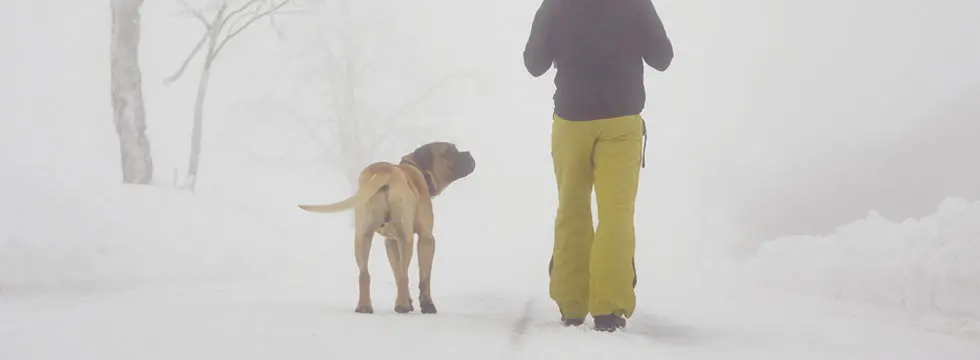Walking Your Dog in the Winter
We’ve all been cozy and warm inside, chestnuts roasting and oh no we forgot to walk the dog! In the winter months, cold weather can make it especially daunting to take your pooch for his regular walk. And if you live in a place where it snows, the walk can seem even more chilly and torturous. Since your dog still needs exercise even when the weather outside is frightful, here are some tips on how to take walks in the winter.
1. Protect their feet
You wouldn’t walk out in the snow with no protection on your feet, so why should your dog? Invest in some protective booties for your pup to wear when they go outside. If they refuse to wear them (as many dogs hilariously do), rub some petroleum jelly on her paws and trim her paw hair short to avoid getting anything stuck to the pads of her feet. When you get home, make sure to thoroughly wipe off all the jelly and any excess snow or sidewalk salt that may be there.
2. Bundle up
Long-haired dogs that were bred for colder temps are usually fine frolicking in icy weather, but your short-haired dogs may need some extra warmth. Look into getting them a sweater or even a waterproof jacket they can wear to keep cozy.
3. Don’t go snow diving
Your fun-loving friend may see a snowdrift as a fun place to explore head-on, but it’s not a good idea. There may be hazards hidden just underneath the snow. If she loves to play in the snow, make sure she does it in a place you know for sure has nothing under the snow, like a wide open field or a certain section of your yard.
4. Watch your dog
Even with all of these precautions, there may be days when it’s just too darn cold to be outside. Pay attention to your dog as you walk so you can watch for signs that she’s too cold. These signs include shivering, burrowing or just general displays of anxiety. As soon as your dog displays signs like these, head indoors.
Make sure to talk to your vet about the kind of exercise your dog can handle in the winter. You can also ask them for advice about ways to work out even if you can’t go out. Whatever you do, try your best to stay warm and cozy this winter to keep Jack Frost from nipping at your dog’s nose.

